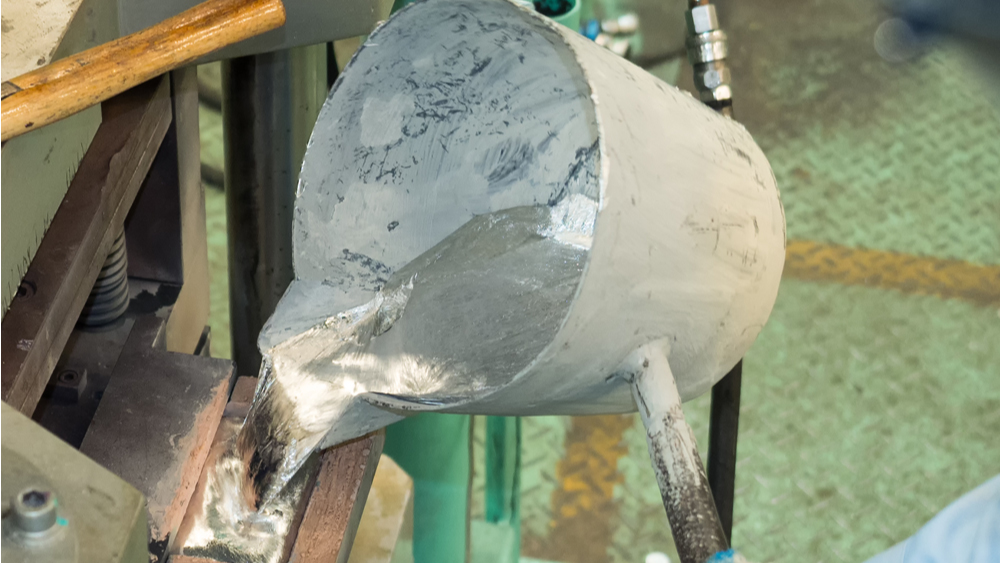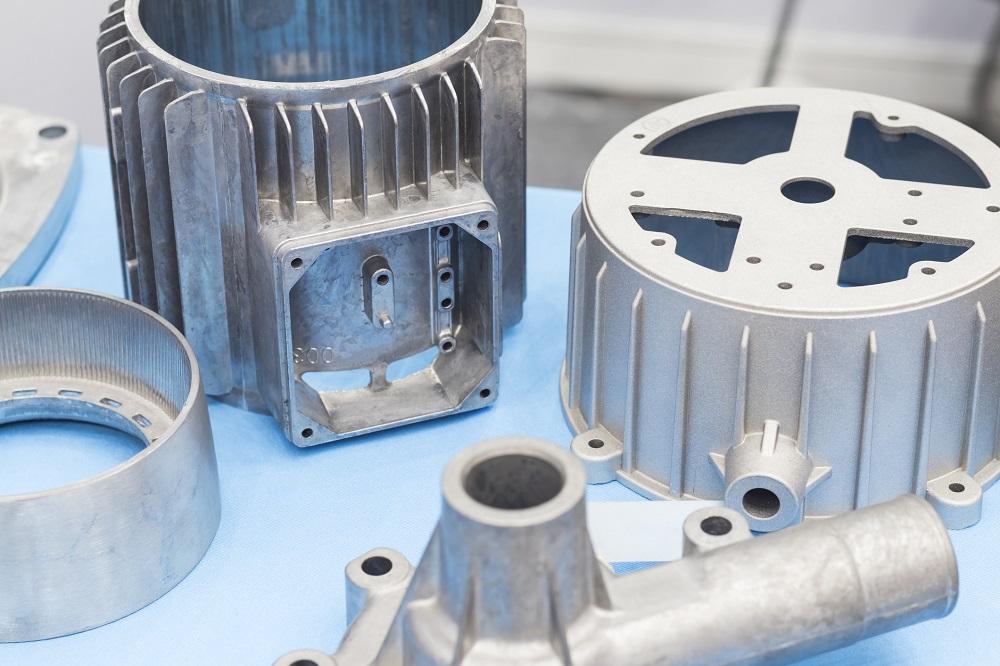Top 5 facts about Aluminum Casting for engineers
Whatever You Required to Understand About the Uses and Perks of Aluminum Castings
Aluminum castings play an important role across different industries, providing special residential or commercial properties that improve product performance. Their light-weight nature and stamina make them perfect for applications in vehicle and aerospace fields. Additionally, the adaptability of casting approaches enables intricate layouts and limited tolerances. As the need for lasting solutions increases, comprehending the advantages and applications of aluminum castings comes to be significantly important. What details advantages do they supply over various other products?
Introduction of Aluminum Casting Processes
Aluminum casting procedures incorporate a selection of techniques made use of to shape liquified aluminum right into desired types. These methods include sand casting, pass away spreading, and investment casting, each offering unique advantages depending upon the application (Aluminum Casting). Sand spreading includes producing a mold from sand, allowing for intricate styles and huge parts, while die casting makes use of high stress to inject molten aluminum into metal molds, guaranteeing precision and smooth coatings. Investment casting, also called lost-wax spreading, creates complicated shapes with excellent dimensional precision, making it appropriate for detailed components
These processes are identified by their capacity to produce lightweight, durable parts that display exceptional corrosion resistance. The adaptability of aluminum enables for customization in various markets, from automotive to aerospace. Additionally, the capacity to recycle aluminum boosts the sustainability of these casting procedures, lowering ecological influence while keeping product integrity. Recognizing these strategies is important for enhancing production performance and achieving high-quality aluminum castings.
Trick Applications of Aluminum Castings
Aluminum castings play an important duty across various industries, specifically in automobile, aerospace, and customer electronic devices. In the automobile sector, they add to lightweight structures that improve gas efficiency. Aerospace parts benefit from aluminum's strength-to-weight proportion, while customer electronic devices utilize its convenience for efficient manufacturing.
Automotive Market Applications
As the automotive industry proceeds to develop, producers significantly count on aluminum castings for their light-weight yet long lasting buildings. These castings play an essential function in enhancing automobile efficiency, gas effectiveness, and general security. Trick applications include engine blocks, transmission real estates, and structural elements, which profit from aluminum's superb strength-to-weight proportion. Furthermore, aluminum castings facilitate complicated geometries, enabling innovative designs that improve aerodynamics and minimize drag. The corrosion resistance of aluminum additionally adds to longevity, reducing maintenance prices for both producers and customers. As electric lorries gain appeal, aluminum castings are vital for battery units and various other components, additionally solidifying their value in the future of automotive production.
Aerospace Part Production
In the aerospace industry, aluminum castings are integral to the manufacturing of light-weight, high-performance elements. These castings are important for producing parts such as engine real estates, structural frameworks, and landing gear elements, where weight reduction is vital for fuel effectiveness and overall performance. The outstanding strength-to-weight ratio of aluminum permits the growth of intricate geometries that enhance the rules of aerodynamics. Furthermore, aluminum's resistance to rust contributes to the long life and integrity of aerospace components, making sure safety and security in flight operations. The spreading procedure also enables for exact resistances, which is essential in conference rigid aerospace market standards. Overall, aluminum castings play a pivotal function in advancing aerospace technology while sustaining the market's push for lasting techniques.
Customer Electronics Manufacturing
Making use of aluminum castings in consumer electronic devices manufacturing has come to be significantly substantial because of their lightweight and sturdy homes. Suppliers leverage these castings to create components for different devices, consisting of smartphones, laptops, and pc gaming consoles. Aluminum's excellent thermal conductivity also aids in heat dissipation, improving gadget performance and longevity. The convenience of aluminum allows for detailed layouts and intricate geometries, making it possible for streamlined and modern-day looks that appeal to customers. Furthermore, aluminum castings can be conveniently recycled, lining up with the growing demand for sustainable production methods. As technology advancements, the function of aluminum castings in creating ingenious and reliable customer electronic devices is anticipated to increase, making them a staple in the industry.

Advantages of Using Aluminum Castings
While different products are available for spreading, aluminum stands out because of its special combination of lightweight buildings, toughness, and corrosion resistance. The reduced thickness of aluminum makes it an excellent option for applications where weight reduction is essential, such as in the vehicle and aerospace markets. Its excellent strength-to-weight proportion permits producers to produce resilient elements without adding extreme weight.
In addition, aluminum castings can be generated with complex layouts and limited tolerances, making it possible for complex geometries that are hard to achieve with other materials. The versatility of aluminum permits different casting methods, including sand, pass away, and financial investment casting, providing to diverse manufacturing demands. Additionally, aluminum's convenience of machining and completing enhances its charm, promoting the development of top quality surface coatings. Overall, the benefits of utilizing aluminum castings add to enhanced performance and efficiency in numerous applications across various fields.
Deterioration Resistance in Aluminum Castings

Natural Oxide Layer
A natural oxide layer kinds on the surface area of aluminum castings, giving a vital barrier versus ecological factors that can bring about deterioration. This thin, protective film is a result of the aluminum's response with oxygen in the air, successfully protecting the underlying steel from dampness, chemicals, and pollutants. Consequently, aluminum castings exhibit remarkable rust resistance, which improves their longevity and toughness in different applications. The oxide layer is not just beneficial for defense but additionally adds to aesthetic qualities, as it can develop a matte finish that several markets discover appealing. In addition, this all-natural procedure reduces the demand for additional layers, making aluminum castings an affordable choice for makers seeking dependable, lasting materials.
Alloy Variants Effect
The composition of aluminum alloys greatly affects their deterioration resistance residential or commercial properties in castings. Different alloy variants, such as 1xxx, 2xxx, and 6xxx collection, show unique degrees of vulnerability to rust. As an example, 1xxx alloys, mainly made up of pure aluminum, offer excellent corrosion resistance due to their high purity. On the other hand, 2xxx alloys, which have copper, might experience considerable deterioration when revealed to severe atmospheres. 6xxx alloys, integrating magnesium and silicon, strike a balance in between strength and resistance. The existence of alloying aspects can enhance or reduce safety oxide layers, ultimately affecting durability and efficiency. Comprehending these variants is essential for choosing the right alloy for particular applications where corrosion resistance is critical.
Layout Adaptability and Personalization
Numerous products exist for casting applications, aluminum stands out due to its exceptional style flexibility and capacity for customization. This adaptability permits developers and engineers to create complex forms and types that satisfy particular useful requirements. Aluminum Casting. The low thickness of aluminum enables light-weight styles, which is article especially helpful in industries such as automotive and aerospace, where weight reduction is vital
Aluminum castings can be tailored to different specs, consisting of wall surface thickness, surface area coating, and dimensional resistances. This versatility not just enhances the visual appeal yet additionally boosts the performance of the last product. In addition, progressed methods such as 3D printing and computer-aided design (CAD) additional help with the customization procedure, making it possible for fast prototyping and decreasing lead times. Aluminum castings can properly satisfy the varied requirements of different sectors while offering suppliers the capacity to introduce and react swiftly to market needs.
Contrast With Other Casting Materials
While various casting products each have their one-of-a-kind benefits, aluminum constantly shows exceptional properties that make it a preferred choice in lots of applications. Compared to iron and steel, aluminum is considerably lighter, which reduces the overall weight of completed products, boosting fuel efficiency in auto and aerospace markets. Aluminum supplies exceptional rust resistance, requiring less maintenance over time compared to products like iron, which can corrosion.
When juxtaposed with plastics, aluminum's stamina and longevity exceed numerous synthetic options, making it ideal for demanding environments. In enhancement, aluminum's thermal and electric conductivity is remarkably higher informative post than a lot of other steels, making it suitable for applications requiring effective warm dissipation or electric components.

Future Patterns in Aluminum Casting Technology
Innovations in aluminum spreading modern technology are set to redefine its applications across numerous sectors. Technologies in automation and robotics are simplifying production procedures, improving efficiency and accuracy. The integration of expert system and device learning makes it possible for real-time surveillance and anticipating upkeep, lowering downtime and enhancing top quality control.
Moreover, the development of innovative alloys is broadening the performance capabilities of aluminum castings, making them appropriate for even more requiring applications, particularly in automotive and aerospace sectors. Lasting methods are likewise gaining traction, with enhanced focus on recycling aluminum and reducing carbon impacts during manufacturing.
Additive production techniques, such as 3D printing, are being discovered to produce complex geometries that typical approaches can not attain, enabling for greater layout flexibility. These patterns indicate a future where aluminum spreading will not only fulfill yet exceed industry assumptions, driving development and sustainability in production.
Frequently Asked Inquiries
Just How Are Aluminum Castings Recycled After Use?
Aluminum castings are usually collected, cleaned, and refined in recycling facilities. The material is melted down, improved, and afterwards changed into brand-new products, therefore conserving resources and decreasing ecological influence while keeping aluminum's preferable homes.
What Are the Normal Costs Related To Aluminum Castings?
The normal prices connected with aluminum castings vary based on elements such as intricacy, quantity, and product specs. Normally, prices range from a few dollars per pound to substantially greater amounts for complex designs and large quantities.
Just How Do Aluminum Castings Compare in Weight to Steel Castings?
Aluminum castings weigh significantly less than steel castings, usually around one-third the weight (Aluminum Casting). This decreased mass permits easier handling, transportation, and application in numerous markets, adding go to boosted effectiveness in design and manufacturing processes
What Industries Largely Depend On Aluminum Castings?
Different markets substantially depend on aluminum castings, including automobile, aerospace, electronics, and consumer products. Their lightweight nature, rust resistance, and versatility make them necessary for producing elements in these markets, enhancing efficiency and performance.
Exist Any Wellness Dangers Related To Aluminum Casting Processes?
Health and wellness dangers connected with aluminum casting procedures consist of direct exposure to fumes, dust, and chemicals, which can lead to respiratory concerns and skin irritability. Proper safety measures and equipment are vital to alleviate these prospective hazards in the work environment.